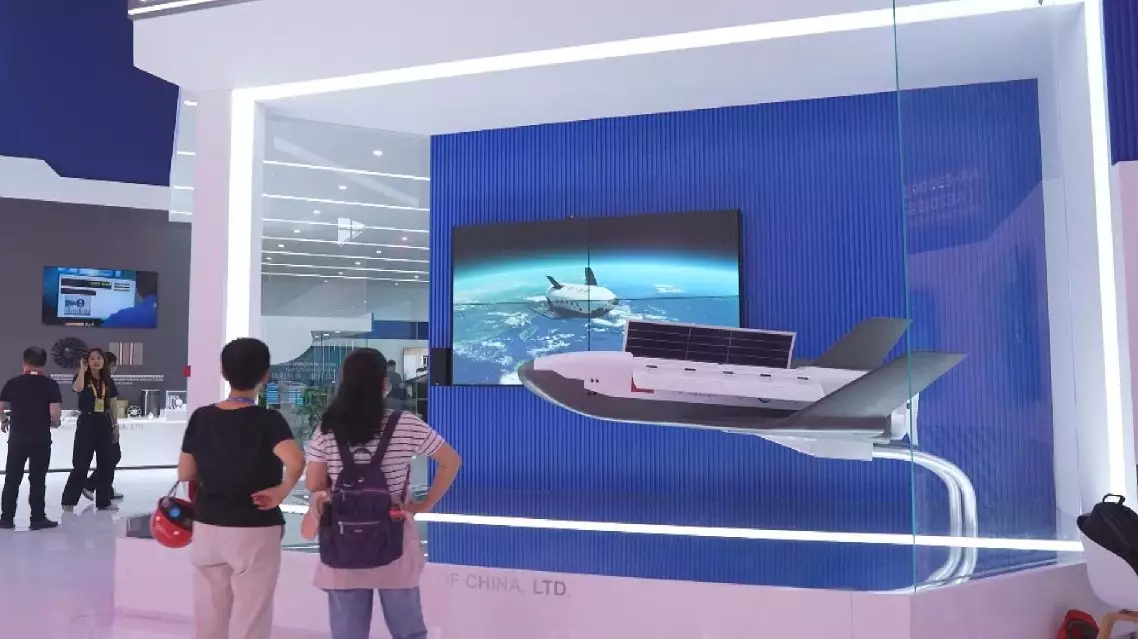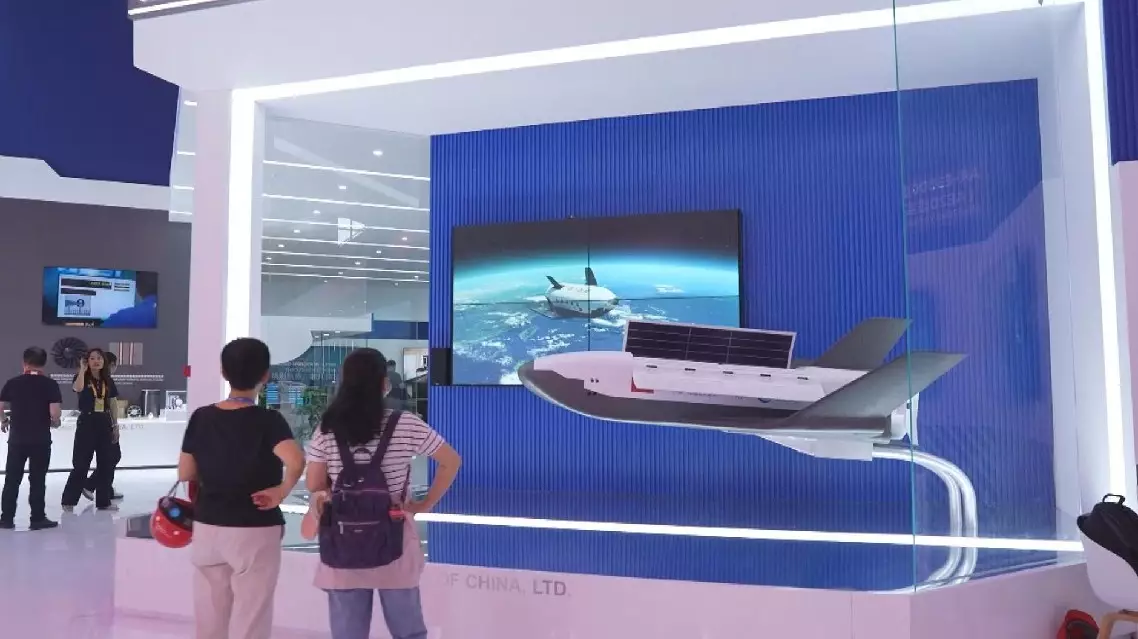A scaled-down model of China's reusable Haolong space cargo shuttle will be on display at the upcoming Airshow China which will take place in Zhuhai, south China's Guangdong Province from November 12 to 17.
The space cargo shuttle, developed by the Chengdu Aircraft Design and Research Institute under the Aviation Industry Corporation of China (AVIC), is a winged, reusable spacecraft. It incorporates a large wingspan, high lift-to-drag ratio, and a reusable technology plan.
Leveraging cutting-edge aviation technologies, it is capable of being launched by a carrier rocket, docking with the space station, and upon separation, executing de-orbit braking and re-entry maneuvers, culminating in a horizontal landing on an airport runway. It also possesses excellent flight performance in both atmospheric and space environments.
The cargo space shuttle is 10 meters long and 8 meters wide, weighing less than half of China's in-service cargo spacecraft Tianzhou.
"The Haolong space cargo shuttle is a winged aircraft with an aerodynamic design featuring a large wingspan and a high lift-to-drag ratio. With blunt-nosed fuselage and large, swept-back delta wings, it combines the characteristics of both spacecraft and aircraft, allowing it to be launched into orbit by a carrier rocket and land on airport runway like a plane," said Fang Yuanpeng, chief designer of Haolong.
"The Haolong space cargo shuttle is designed as a low-cost, reusable spacecraft for transporting cargo to space station. After completing the cargo transport mission, it can perform a horizontal landing on airport runways, enabling it to meet cargo transport needs both to and from the space station. Furthermore, its reusability helps reduce costs in spacecraft development and cargo transportation," said Fang.
Haolong has recently been selected as one of the winners of the China Manned Space Agency's solicitation for a low-cost cargo transportation system and has secured contract for the flight verification phase.

Scaled model of China's reusable space cargo shuttle to be display at Zhuhai airshow

Scaled model of China's reusable space cargo shuttle to be display at Zhuhai airshow
Luis Gomes, acting president of the Macao Special Administrative Region (SAR) Sports Bureau, highlighted that Macao, having hosted numerous international sporting events thanks to the mainland's vast resources, seeks to attract more globally renowned sports events to enhance local economic growth and the sports industry.
During an interview with China Global Television Network (CGTN), Gomes highlighted that Macao's ambition to become a sports hub stems from its success in attracting a growing number of international sporting events and spectators from home and abroad, achieved through leveraging its unique advantages and special status under the "One Country, Two Systems" policy.
"Macao's strategic positioning as 'one center, one platform, one base' has enabled it to harness the potential of sporting events to strengthen its international influence. Leveraging its unique advantages and special status, such as 'One Country, Two Systems', its role as an international free port, a separate customs territory, and its low and simple tax regime, Macao has successfully attracted a growing number of international sporting events and tourists. Thanks to the mainland's vast tourism resources and the integration of the Guangdong-Hong Kong-Macao Greater Bay Area, Macao has hosted numerous high-profile international events," Gomes said.
During the International Table Tennis Federation World Cup Macao 2024, tickets were sold out within a mere 2.2 seconds, emphasizing Macao's significant allure to both domestic and international spectators, as highlighted by the official.
The "one center, one platform, one base" refers to a world center for tourism and leisure, a commercial and trade cooperation service platform between China and Portuguese-speaking countries, and a base for cultural exchange and cooperation where Chinese culture is the mainstream and diverse cultures coexist.
According to Gomes, Macao is anticipating to attract more globally renowned sports events so as to further drive economic growth and foster the prosperity of the local sports industry.
"The Macao Special Administrative Region is actively enhancing the sports sector as part of its economic diversification plan. In 2024, Macao successfully hosted 24 international sports events, a remarkable increase from just seven in 2019. We have enhanced the global profile of established events, such as the Macao International Marathon, by inviting athletes from Portuguese-speaking countries. Additionally, we have partnered with international sports organizations to bring popular competitions, including table tennis and basketball, to Macao. Notably, Macao is set to host two NBA pre-season games next year. We aspire to attract more globally renowned sports events to Macao, further driving economic growth and fostering the prosperity of the local sports industry," he said.

Macao targets more global events to enhance local sports industry: official











